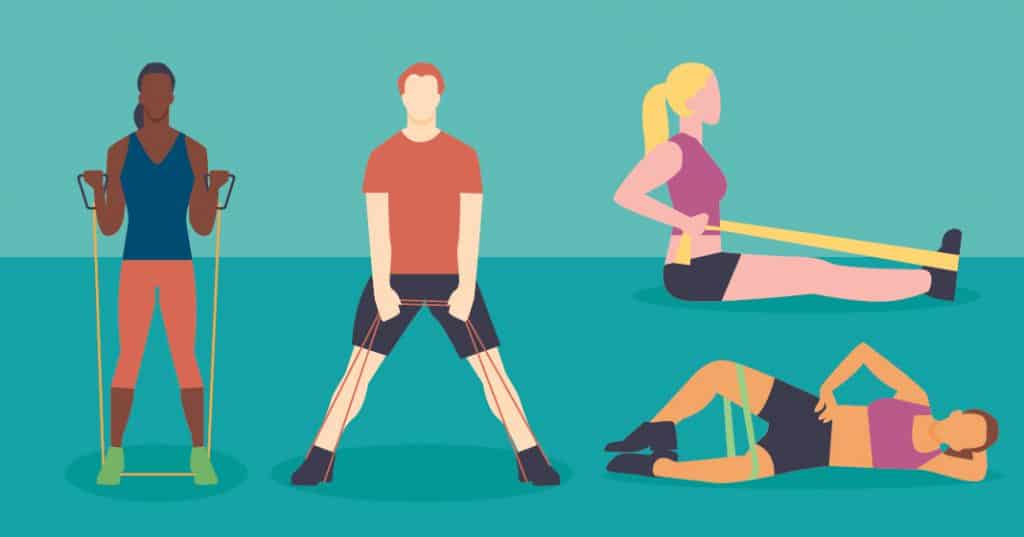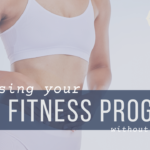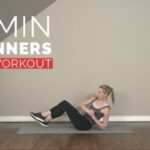Resistance bands are a perfect tool for beginners. They are light, affordable, and great for building strength anywhere. No gym needed. This plan shows how to get started. You’ll learn which bands to pick, how to use them safely, and a full workout routine tailored for new exercisers. Plus, tips on progression, recovery, and tracking results. Let’s unlock your strength with resistance bands.
Why Resistance Bands Make a Great Starting Point
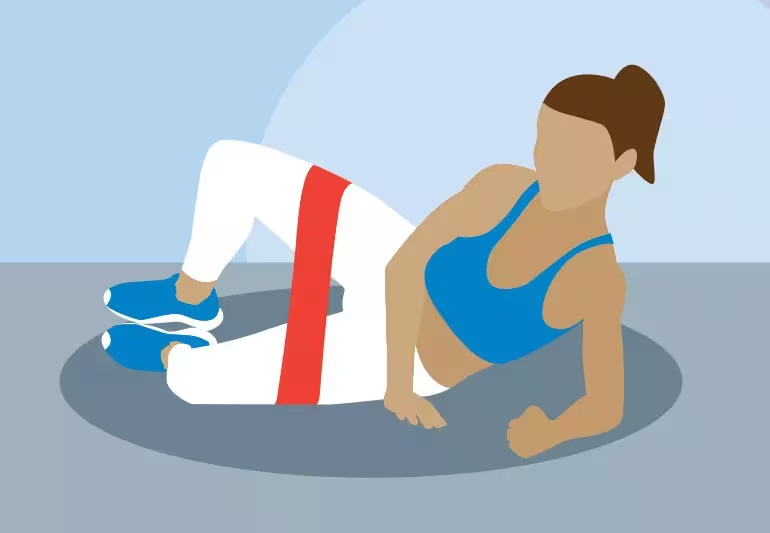
Bands Fit Everywhere, Without Heavy Gear
Resistance bands take up almost no space. You can exercise at home, on the go, or while traveling. They are cheaper than dumbbells or gym machines. And you can still get a full workout.
Safe, Low-Impact Strength Training
Bands provide a controlled tension. This means they are gentler on joints than free weights. They help beginners build muscle without risking heavy strain or injury. Perfect for those new to strength training.
Picking the Right Resistance Band Kit
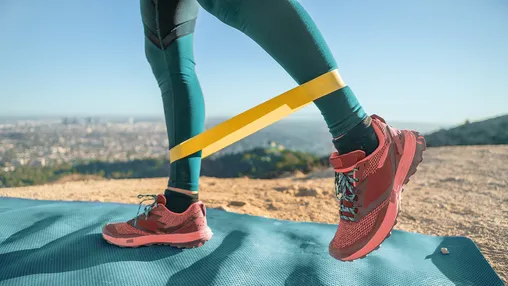
Choose a Set with Multiple Bands
Beginner kits should include light, medium, and heavy bands. This lets you adjust resistance as you grow stronger. Thicker, heavier bands offer more tension.
Know the Types: Loop, Tube, and Figure-8
Loop bands (flat circular bands) are ideal for lower body. Tube bands with handles work upper body well. Figure-8 bands are useful for quick, light resistance moves. Choose based on exercises you plan to do.
Beginner Exercises Using Bands
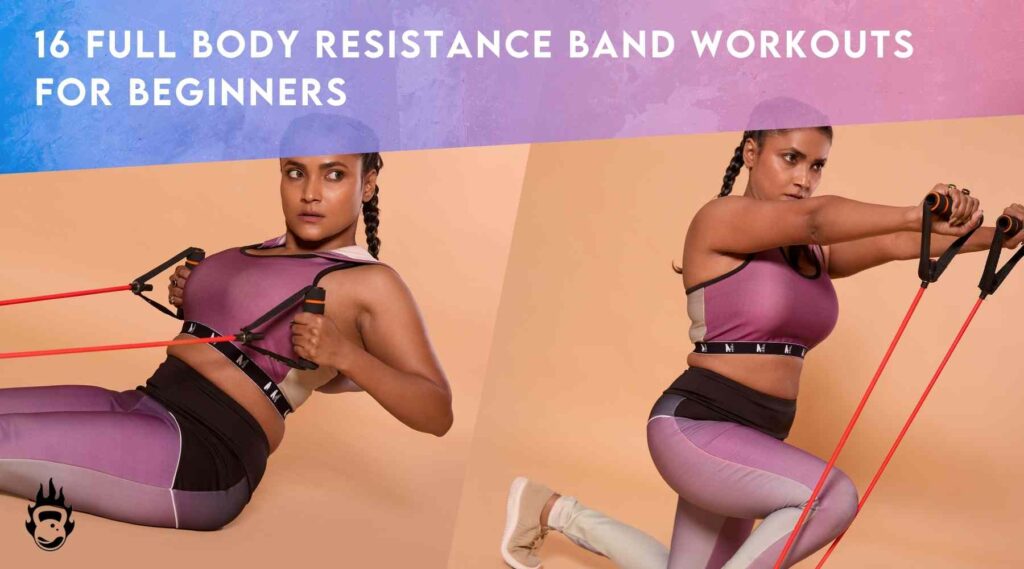
Here are 8 essential moves that work major muscle groups. All use simple form with focus on control.
Glute Bridge with Band
- Place loop band just above knees.
- Lie on back, knees bent, feet flat.
- Press hips upward, squeezing glutes.
- Return slowly.
This strengthens glutes, hips, and lower back gently.
Seated Row with Tube Band
- Sit on floor. Legs straight or slightly bent.
- Loop the band around your feet.
- Pull handles toward chest.
- Control return.
This works upper back and arms.
Squat with Band Above Knees
- Loop band above knees.
- Stand with feet hip-width apart.
- Lower into squat, pushing knees outward.
- Rise back up.
This targets quads, glutes, and encourages good alignment.
Shoulder Press with Tube Band
- Stand on the band’s middle.
- Grip handles at shoulder height.
- Press upward until arms are straight.
- Lower slowly.
This strengthens shoulders and upper chest.
Banded Deadlift (Using Tube or Loop under Feet)
- Stand on band with feet shoulder-width.
- Hold ends or handles.
- Hinge at hips, keep back flat.
- Return to standing.
This targets hamstrings, glutes, and lower back.
Standing Bicep Curls
- Step on band under both feet.
- Hold handles, palms facing up.
- Curl hands toward shoulders.
- Lower slowly.
This isolates the biceps with adjustable tension.
Triceps Extensions (Overhead or Backward)
- Use tube band anchored under foot or door.
- Grab handles behind head or at chest.
- Straighten arms overhead or back.
- Control the return.
This works triceps and helps improve arm tone.
Lateral Band Walks
- Loop band around ankles or above knees.
- Bend knees slightly.
- Step side to side with tension.
- Keep lower body level.
This targets inner and outer hips effectively.
Also Read Should You Work Out Every Day? A Beginner’s Guide to Smarter Fitness
Structuring Your Beginner Workout Plan
Sample 3-Day Weekly Plan
- Day 1 (Strength): Glute bridges, rows, squats, shoulder press
- Day 2 (Rest or Active Recovery): Light walking
- Day 3 (Strength): Deadlifts, bicep curls, tricep extensions, band walks
- Day 4: Rest or stretching
- Day 5 (Full Body Circuit): Any 5 exercises from above, one set each
- Days 6–7: Rest or light activity
Reps, Sets, and Progression
Beginners: start with 1–2 sets of 8–12 reps per move. Use light band first. Add reps or choose heavier band as strength improves. Aim to increase gradually every 2–3 weeks.
Safety Tips When Using Resistance Bands
Maintain Controlled, Proper Form
Always move slowly on both the push and pull. Avoid jerky motions. Keep your core engaged and spine neutral to prevent injury.
Inspect Bands Before Each Use
Look for tears, thin spots, or overstretched sections. Metals or clips should be secure. Replace any damaged band.
Benefits Beyond Just Muscle Strength
Improves Balance and Postural Control
Resistance bands work stabilizer muscles. This helps with posture, daily movement, and balance. Useful for beginners or those with limited mobility.
Supports Joint-Friendly Conditioning
Bands place less stress on joints. They allow for fluid resistance throughout the range of motion. This makes them excellent for older adults or rehab scenarios.
Nutrition and Recovery for Band Beginners
Add Protein to Support Muscle Building
Eat lean protein sources (chicken, beans, dairy) within a few hours after workouts. Protein helps rebuild muscles torn during training.
Prioritize Hydration and Rest
Drink water consistently. Stretch or use foam rollers on rest days. Proper recovery helps prevent soreness and speeds progress.
Beginner Milestones to Measure Progress
Track Exercise Strength or Reps Weekly
Note when you move to a heavier band or increase reps. These are big wins that show real progress.
Notice Physical Changes Beyond the Scale
Pay attention to how your clothes fit, how everyday tasks feel easier, or better posture. These count even if the scale doesn’t move.
Beware of Common Beginner Mistakes
Using Always the Heaviest Resistance
Beginners can get tempted to jump too quickly. That leads to poor form. Start light, build gradually, and focus on control first.
Skipping Rest Days Consistently
Rest is part of training. Skipping days leads to fatigue, injury, and plateaus. Schedule 1–2 recovery days weekly when starting.
FAQs: Resistance Band Beginners Stay Smart
Q: Can I build muscle with bands alone?
Yes. Resistance bands can offer as much tension as light to medium weights. With progressive overload and proper form, you’ll make gains.
Q: How often should I do this band workout plan?
Aim for 3 to 4 sessions per week, with at least one rest or active recovery day between strength workouts.
Q: When should I change to a heavier band?
When you can do 12 reps easily with good form for two sessions in a row, move to the next band level or increase reps.
Q: Do bands replace weights completely?
They work great for beginners and for mobility. Many people use bands before they move to dumbbells. You can also combine both for variety later.
Q: What if I feel pain during exercise?
Stop if it’s sharp or persistent. Mild muscle burn is normal. Use better form or switch to lighter resistance if needed.
Final Thoughts: Your Simple Resistance Band Routine Awaits
Resistance bands are a perfect tool for beginners starting a strength journey. They are safe, affordable, and highly flexible. Just 2–4 band workouts per week—combined with good rest and nutrition—lays a foundation for real strength and tone.
Take your time. Focus on form and consistency. Track your gains not by a number on a scale but by stronger moves and healthier habits.
Ready to start? Grab your band, follow the plan, and get stronger every week.
Author- Ayush
